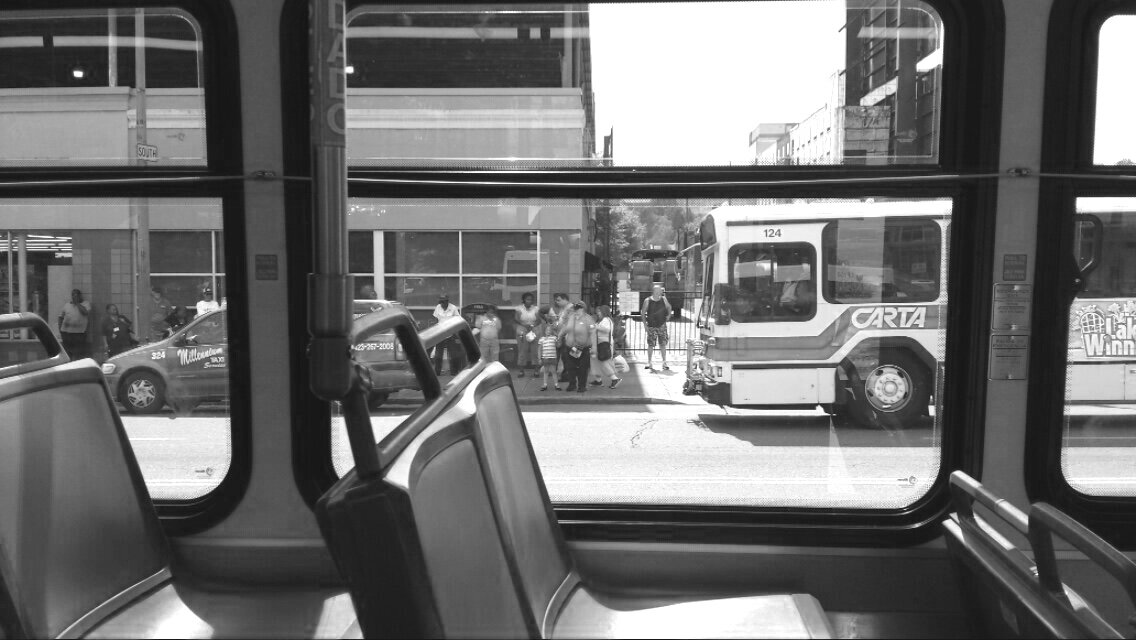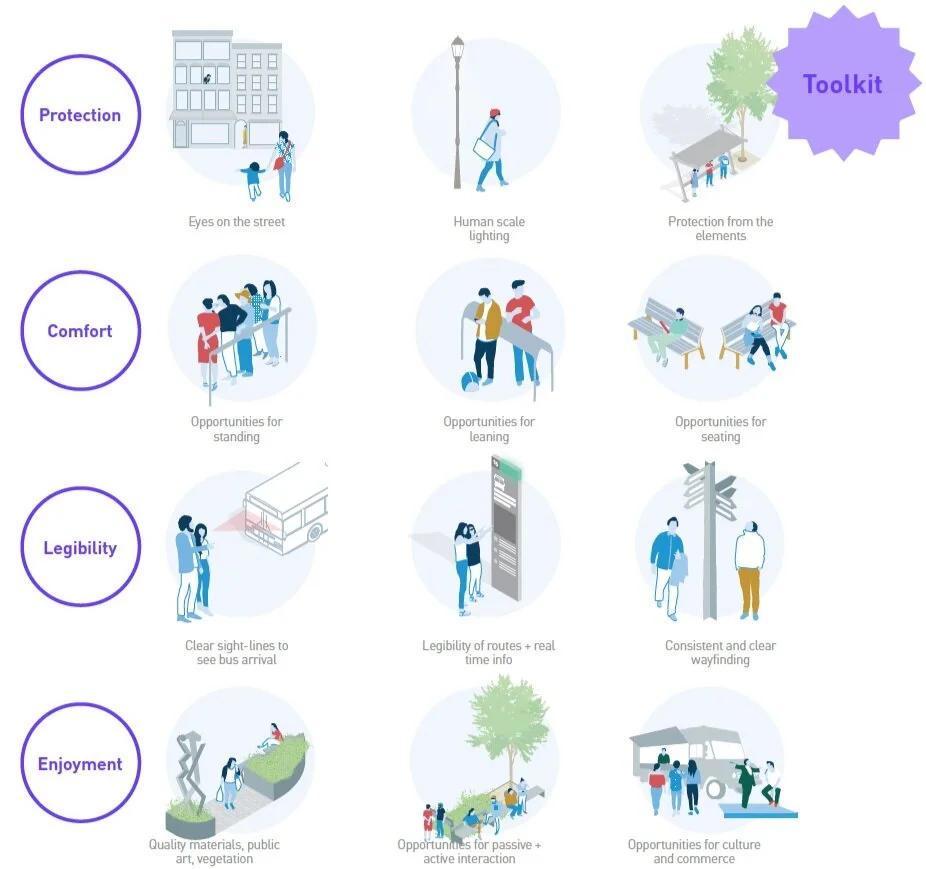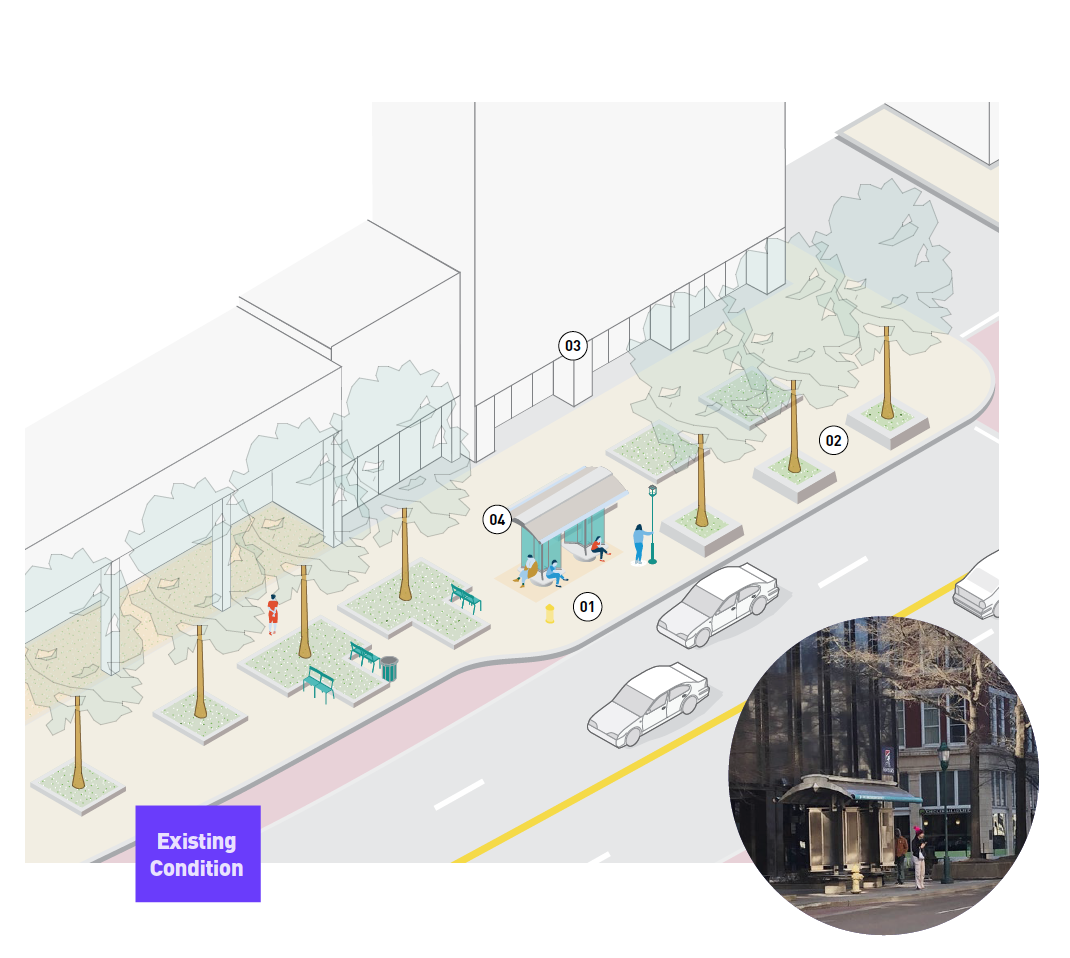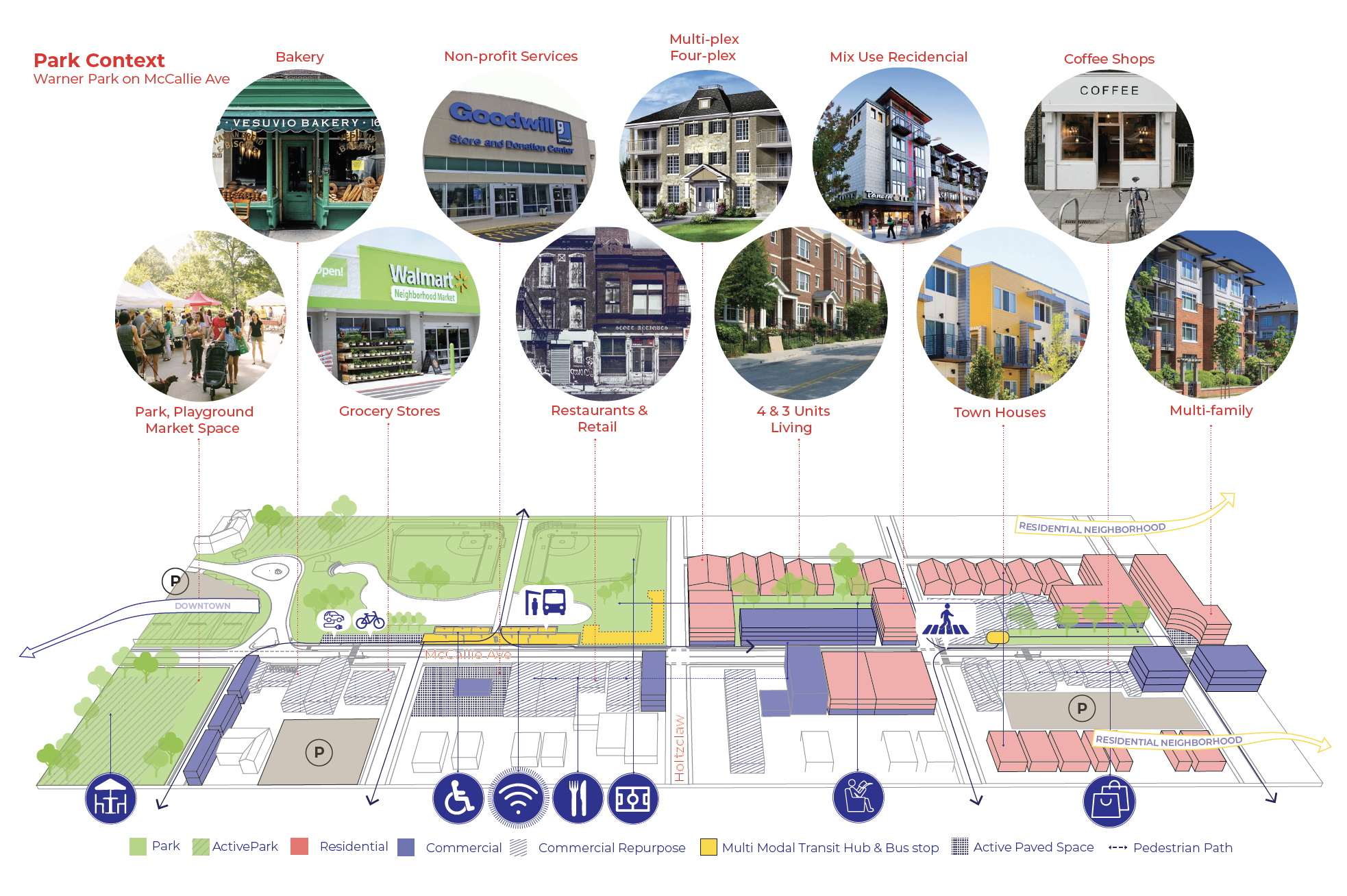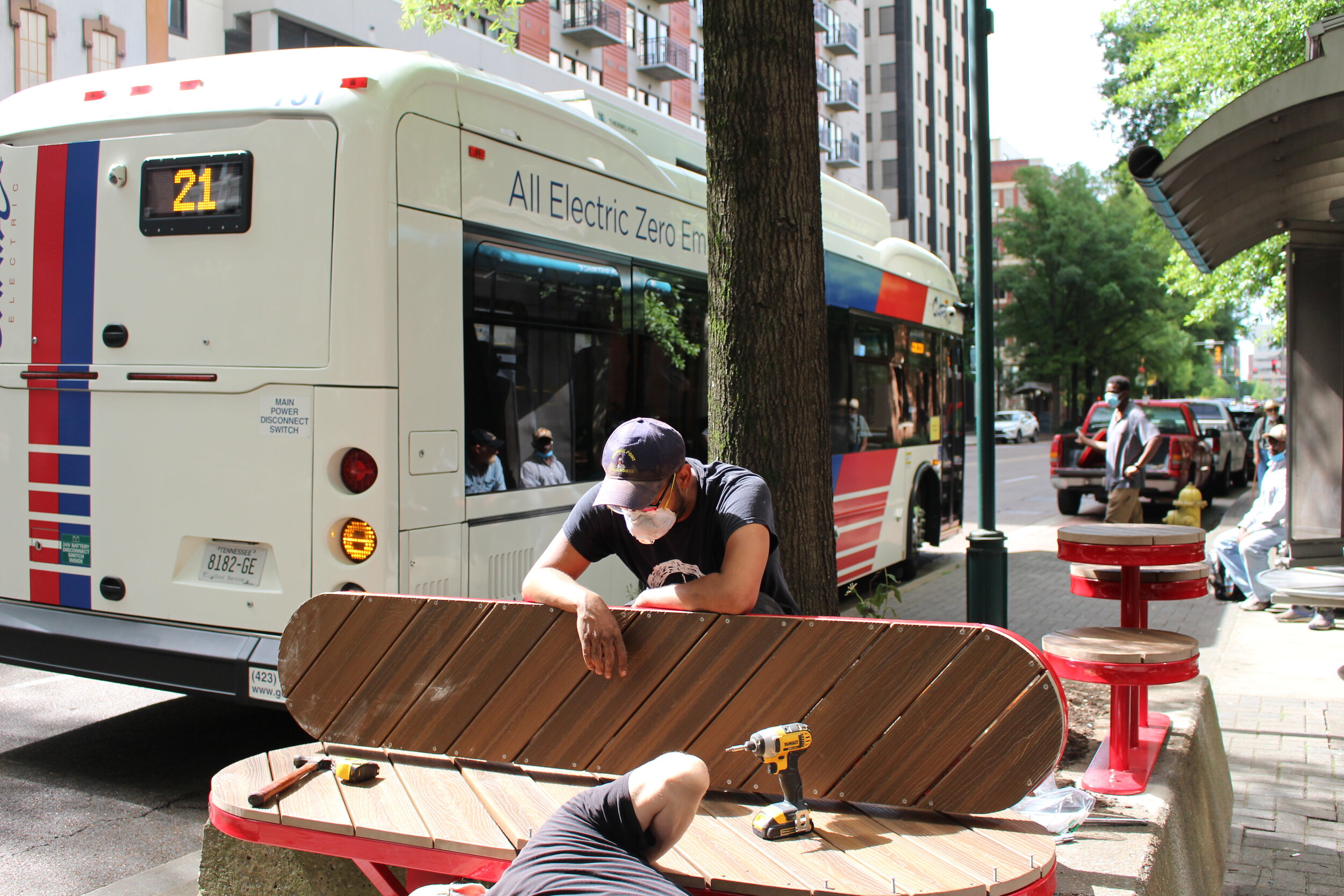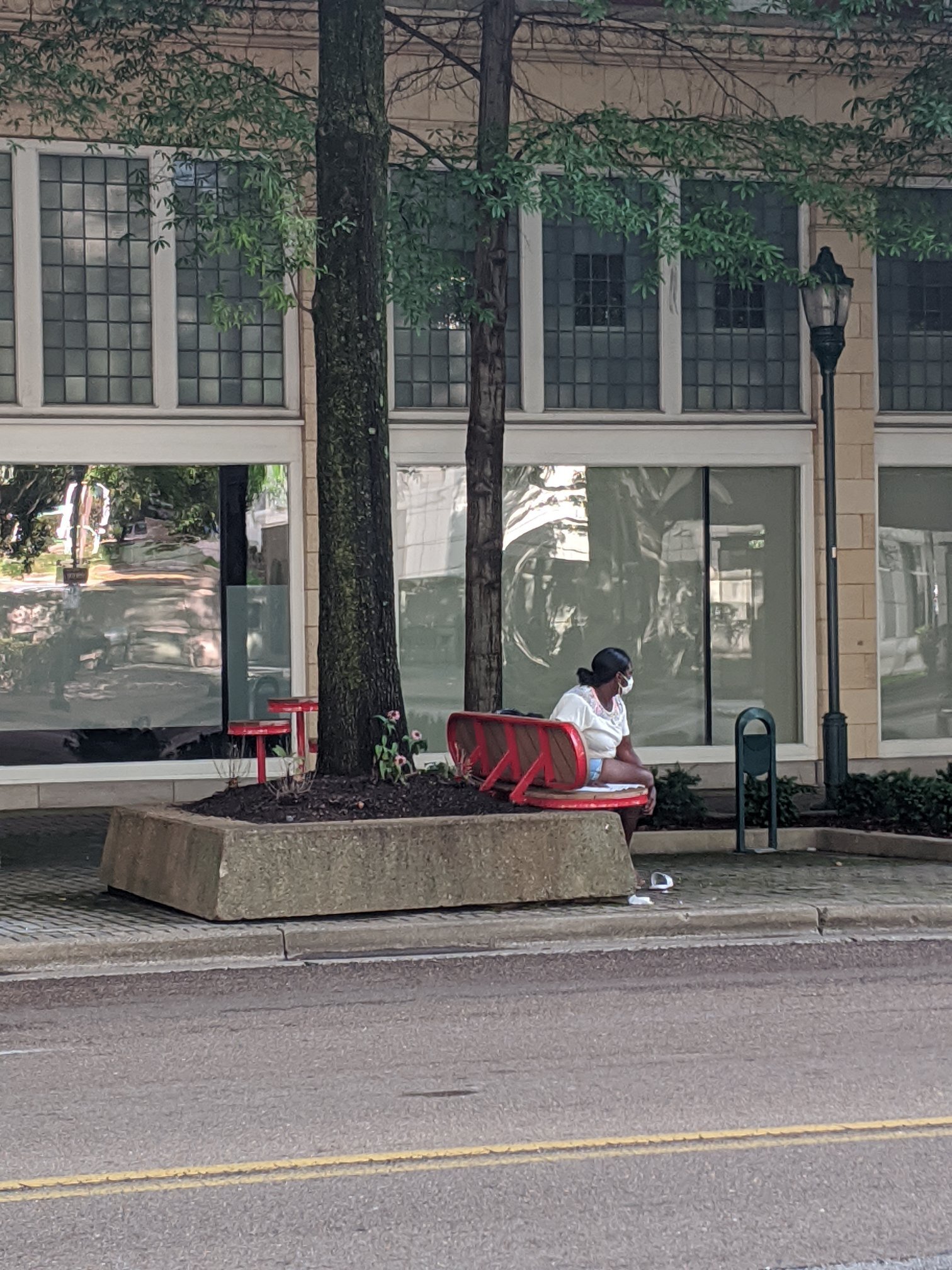Transit stops are some of the most active public spaces in the Innovation District but they lack comfort, functionality, and social-friendly seating.
Within the Innovation District, transit stops are some of the most active and social public spaces with up to 70% of people in groups of 2 or more. Yet the design of space is harsh and individualized seating pods work against the communal character of these spaces. The bus stops restrict the comfort of those waiting, lack opportunities for social seating, and offer few invitations for activities beyond waiting for the bus. This study, as part of a continuation of the Public Realm Action Plan, re-imagines the bus stop as a multi-functional space that engages with the sidewalk’s public life and makes waiting for the bus a dignified, safe and enjoyable experience. Understanding the site and the local community can help reveal how existing bus stop infrastructure can be adapted into a delightful community node.
engagement
The engagement was a two-part endeavor with the goal of understanding how bus stop users feel about the space and ways it could be improved. Through the initial Public Realm Action Plan, bus stops are identified as Market Street’s most active public spaces, the Action Plan sets forth goals and recommendations to improve bus stops with a vision for the ‘Bus Stop of Tomorrow’. Additionally through the Studio’s internship program, students in collaboration with local artist Casey Fletcher, envisioned a kit of parts which could apply to each bus stop’s unique context and ridership.
process
In collaboration with artist Casey Fletcher, the Studio’s study reimagines bus stops as community hubs designed to engage and enhance the local context. One proposed solution creates a modular system of infrastructure from a bus stop bench in some locations to a more expansive multi-modal transit hub in other locations incorporating bike and scooter share. The study is the basis for the initial pilot project on Market Street.
PILOT PROJECt | Artist statement
Transit rider feedback gave insight into the want for more color, playful elements, references to nature, better shelter, and inclusion of amenities to improve the commutes of riders. Observations that were collected from a distance were also used to develop concepts that reinforce the practices of riders instead of attempting to convince people to fall into another framework entirely. Design for intervention centers around the concrete planters distributed along Market Street near bus stops. We noticed that riders would often choose to sit on these planter ledges instead of using the designated bus stops and wanted to let them know that the people responsible for making changes in the city see them and respond to an existing pattern of use. The design includes a bench, foot rest, and standing table ledges for riders to use, built from wood and steel.
SUMMER 2019 INTERNSHIP STUDY | FINAL PRESENTATION
Chattanooga Design Studio’s summer internship program built on the work of the Public Realm Action Plan which identifies bus stops as important civic hubs and public space activators. The summer study considered multiple urban design scales from neighborhoods and corridors to individual bus stop benches. The final presentation can be viewed at the link below.
The internship study also identifies transit advocacy as a key next step in advancing mobility choices in Chattanooga. A subsequent program of Chattanooga Design Studio launched an advocacy page, ‘Chatt En Route’, linked below as a framework for better integrating urban design and transit.

